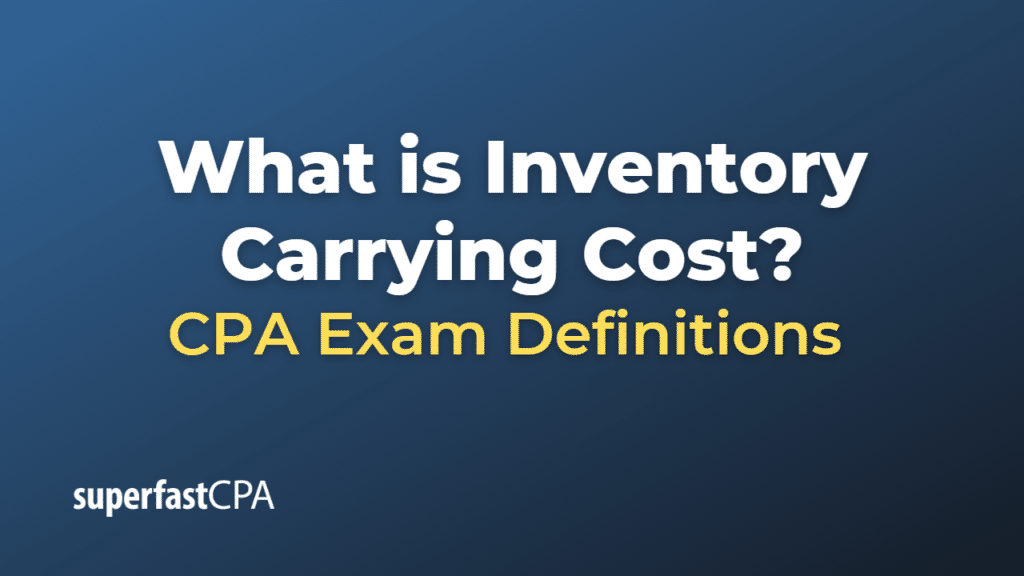Inventory Carrying Cost
Inventory carrying cost, also known as holding cost, is the cost associated with holding or storing inventory over a certain period of time. It is a key component of inventory management and supply chain management, as businesses aim to balance the costs of holding too much inventory against the costs of running out of stock.
Inventory carrying costs typically include:
- Storage Costs: The cost of space in a warehouse or other storage facility. This can include rent or depreciation, utilities, and other facilities costs.
- Handling Costs: The costs of moving inventory in and out of storage, which can include labor costs, equipment costs (like forklifts or pallets), and associated operational costs.
- Insurance and Taxes: The cost of insuring inventory against loss or damage, and any property or inventory taxes associated with the inventory.
- Cost of Capital: The opportunity cost of the capital tied up in inventory. This is the return the business could have earned on that capital if it were invested elsewhere.
- Obsolescence, Shrinkage, and Deterioration: The costs associated with inventory losing value over time, becoming obsolete, or being lost, stolen, or damaged. This can also include spoilage costs for perishable items.
Inventory carrying cost is often expressed as a percentage of the inventory’s value on an annual basis. The exact carrying cost can vary widely depending on the nature of the inventory, the business model, and other factors. It is an important consideration in determining the optimal levels of inventory to hold, and in evaluating inventory management performance.
Example of Inventory Carrying Cost
Suppose you own a small business that sells handmade furniture. You maintain an inventory of finished furniture in a rented warehouse.
Now, let’s calculate the annual inventory carrying cost:
- Storage Costs: The warehouse rent is $12,000 per year.
- Handling Costs: You pay a warehouse worker $15,000 per year to move and manage the inventory.
- Insurance and Taxes: The annual cost of insuring the inventory is $1,000, and you pay $500 per year in property taxes for the inventory.
- Cost of Capital: You have $200,000 worth of inventory, and you estimate that if you could invest that money in another part of your business, you could earn a 5% return, or $10,000 per year.
- Obsolescence, Shrinkage, and Deterioration: You estimate that about 2% of your inventory loses value each year due to obsolescence, damage, or other factors. That’s a loss of $4,000 (2% of $200,000).
Adding up these costs, your total annual inventory carrying cost is $42,500 ($12,000 + $15,000 + $1,000 + $500 + $10,000 + $4,000).
Expressed as a percentage of your inventory value, your carrying cost rate is 21.25% ($42,500 / $200,000).
Knowing this percentage helps you make informed decisions about how much inventory to carry. If the cost of running out of stock (like lost sales or customer goodwill) is greater than the carrying cost, you might choose to carry more inventory. But if the carrying cost is greater, you might aim to reduce your inventory levels, improve your inventory turnover, or find ways to reduce your carrying costs.













